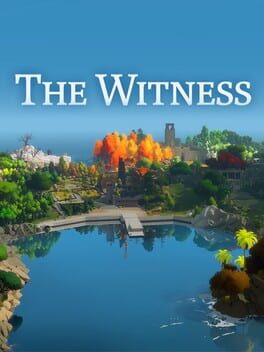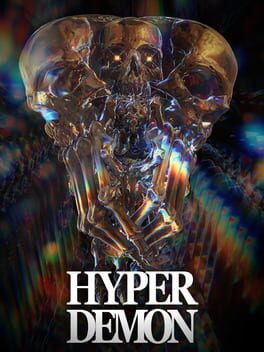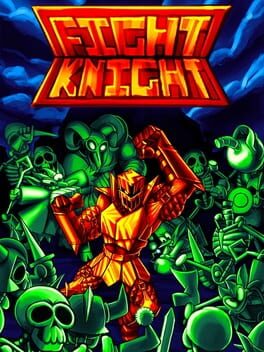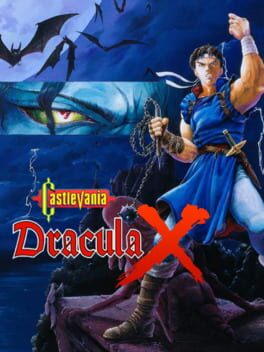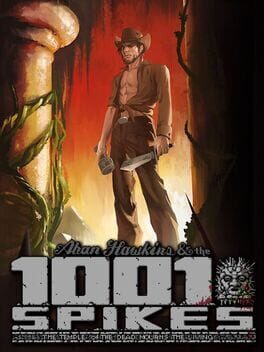bateater
24 Reviews liked by bateater
The Witness
2016
Most of the people who tell you they want games to be seen as art are lying.
I don't just mean in the sense that "gamers want games to be art but complain when people critique their problematic elements". That is true, but moreover, another side mostly composed of quirky indie fans often gets ignored. Most of the people who talk about "games as art" are really talking about "art as games". People have ideas about what makes great art: stories, characters, music, atmosphere, visuals, animation, setting; this is what a game needs to be great art, it needs to have the same elements that make literature great, or film. Most of these people will say that in order to be art, games have to "more than just games". Some will even say that games need to stop being games altogether.
The Witness may be the single greatest game as a piece of art yet, and it may never get the credit it deserves simply because it is a video game, and it isn't trying to be something else. The way it so totally and coherently expresses itself through its communication and psychology, through its singular mechanic of movement. Navigation in macrocosm and microcosm. It's a game you play on a virtual island, a game you play on a screen within a screen, a game that you play in your head.
I don't just mean in the sense that "gamers want games to be art but complain when people critique their problematic elements". That is true, but moreover, another side mostly composed of quirky indie fans often gets ignored. Most of the people who talk about "games as art" are really talking about "art as games". People have ideas about what makes great art: stories, characters, music, atmosphere, visuals, animation, setting; this is what a game needs to be great art, it needs to have the same elements that make literature great, or film. Most of these people will say that in order to be art, games have to "more than just games". Some will even say that games need to stop being games altogether.
The Witness may be the single greatest game as a piece of art yet, and it may never get the credit it deserves simply because it is a video game, and it isn't trying to be something else. The way it so totally and coherently expresses itself through its communication and psychology, through its singular mechanic of movement. Navigation in macrocosm and microcosm. It's a game you play on a virtual island, a game you play on a screen within a screen, a game that you play in your head.
Hentai Nazi
2020
Hyper Demon
2022
Hyper Demon is basically just Doom Eternal for people who liked Eternal’s shift towards being a ‘game-y game’ but didn’t like how it executed its mechanics.
Both games try to combine Ninja Gaiden’s high difficulty and hyper aggressive enemy design with fps combat, creating stylish action games focused on RAW EFFICIENCY - killing enemies faster than they can kill you. Whereas Eternal took influence from MMO combat with cooldown management, infinitely replenishing resources, frequent healing, and damage rotations - Hyper Demon takes influence from minimalist arcade games, focusing on simple tactical trade-offs, routing, and long term risk/reward with a small but multi-faceted toolset.
An easy example is by looking at the first enemy you meet in the game - a Spawner (don’t know the official names, sorry). You can instantly kill the Spawner with a long-range laser, kill it with a melee attack to grant an instant speed boost, or kill it with your daggers to drop an item box.
If it drops an item box, you have 3 options -
1. Destroy the box with a laser to spawn a large swarm of homing daggers, automatically killing any nearby enemies
2. Destroy the box with a dash for a speed boost
3. Destroy the box with your daggers to spawn GEMS
Anyone familiar with Ninja Gaiden’s essence system knows exactly how this works. Pick up theessence gems to level up your weapons (HD does this automatically, no need to buy things from a menu) or destroy the essence to charge up a UT high damage super attack (in this case a big-ass laser beam). You’re balancing the short-term value of laser attacks vs the long-term value of powering up your weapons. And it’s not like you can stockpile these lasers - just like NG, you either use it or lose it.
BUT THEN, you have to consider aiming the laser directly at an enemy vs aiming the laser at the ground, splitting the shot to stun multiple enemies simultaneously.
The other enemies are also interesting to fight against! Larvae are trivial if shot from afar but function as jump pads if you dash into them, giving you a reason to get close. Spider enemies are annoying because they absorb any essence you leave on the ground, but if you deliberately leave them alive for long enough, they‘ll spawn explosive canisters that can be shot to decimate waves of enemies (and the explosions are bigger if you use a laser). There are also Snakes which are mostly harmless, but if you leave them alive for too long, they’ll block access to slow-mo power-ups by surrounding them with impenetrable steel tails (and the power-ups themselves can be sacrificed in place of Essence if you want to shoot a fat laser). Enemies spawn in large groups, so you always have to consider ‘What enemy should I keep alive? Who’s my biggest priority right now?’ There are even more enemy types in the game, but those will be a surprise for anyone who can survive for more than 2 minutes (much harder than it sounds!).
I’m not gonna list every decision you make in a run (I haven’t even talked about all of the movement options like bunny-hopping, fakes, or shotgun jumping) or go over its commitment to fairness (great sound design + spherical projection provide near perfect information) but hopefully you can see how every interaction is about making a deliberate trade-off that can subtly snowball over the course of a run. Routing what enemies you want to kill and how you want to kill them has a lot of depth! And this is all tied together with a simple scoring system where you lose points every second but regain points anytime you kill an enemy, forcing you to play as aggressively as possible if you want to maintain a high score. I’m absolutely in love with this game, and can see myself chasing high scores for the rest of the year. If Eternal rubbed you the wrong way (or you just want an alternative to Ultrakill’s Cyber Grind), then I highly recommend Hyper Demon!!!
Both games try to combine Ninja Gaiden’s high difficulty and hyper aggressive enemy design with fps combat, creating stylish action games focused on RAW EFFICIENCY - killing enemies faster than they can kill you. Whereas Eternal took influence from MMO combat with cooldown management, infinitely replenishing resources, frequent healing, and damage rotations - Hyper Demon takes influence from minimalist arcade games, focusing on simple tactical trade-offs, routing, and long term risk/reward with a small but multi-faceted toolset.
An easy example is by looking at the first enemy you meet in the game - a Spawner (don’t know the official names, sorry). You can instantly kill the Spawner with a long-range laser, kill it with a melee attack to grant an instant speed boost, or kill it with your daggers to drop an item box.
If it drops an item box, you have 3 options -
1. Destroy the box with a laser to spawn a large swarm of homing daggers, automatically killing any nearby enemies
2. Destroy the box with a dash for a speed boost
3. Destroy the box with your daggers to spawn GEMS
Anyone familiar with Ninja Gaiden’s essence system knows exactly how this works. Pick up the
BUT THEN, you have to consider aiming the laser directly at an enemy vs aiming the laser at the ground, splitting the shot to stun multiple enemies simultaneously.
The other enemies are also interesting to fight against! Larvae are trivial if shot from afar but function as jump pads if you dash into them, giving you a reason to get close. Spider enemies are annoying because they absorb any essence you leave on the ground, but if you deliberately leave them alive for long enough, they‘ll spawn explosive canisters that can be shot to decimate waves of enemies (and the explosions are bigger if you use a laser). There are also Snakes which are mostly harmless, but if you leave them alive for too long, they’ll block access to slow-mo power-ups by surrounding them with impenetrable steel tails (and the power-ups themselves can be sacrificed in place of Essence if you want to shoot a fat laser). Enemies spawn in large groups, so you always have to consider ‘What enemy should I keep alive? Who’s my biggest priority right now?’ There are even more enemy types in the game, but those will be a surprise for anyone who can survive for more than 2 minutes (much harder than it sounds!).
I’m not gonna list every decision you make in a run (I haven’t even talked about all of the movement options like bunny-hopping, fakes, or shotgun jumping) or go over its commitment to fairness (great sound design + spherical projection provide near perfect information) but hopefully you can see how every interaction is about making a deliberate trade-off that can subtly snowball over the course of a run. Routing what enemies you want to kill and how you want to kill them has a lot of depth! And this is all tied together with a simple scoring system where you lose points every second but regain points anytime you kill an enemy, forcing you to play as aggressively as possible if you want to maintain a high score. I’m absolutely in love with this game, and can see myself chasing high scores for the rest of the year. If Eternal rubbed you the wrong way (or you just want an alternative to Ultrakill’s Cyber Grind), then I highly recommend Hyper Demon!!!
Fight Knight
2021
DISCLAIMER: I do not give a FUCK about the dev drama. I have my own opinions about what happened, but it isn't my or your place to make judgements on an art piece based exclusively on one sole exposure of its creators. The steam reviews and part of the backloggd reviews are so clearly negatively biased towards the game because they're terminally online, faux-altruistic psychos who are reductive to the art of critiquing games. Games, for the most part, are to be judged on the material presented in the product; and that product is one of the best new indie games I've played in ages.
Forgoing sucking off its gameplay premise, Fight Knight consistently evolves on its mechanics and designs in a traditional, linear, and fantastic way. In an era of indie games where most aim to reinvent, subvert expectation, or stand out arbitrarily, Fight Knight can only be described as confident and sincere.
There was never a moment where I felt a headache coming on due too an overly complex puzzle. Any headaches were induced purely by my own mistakes, both in and out of combat. Enemy AI is stoic, and not very complex or manipulatable, but in turn makes approaching them a unique challenge with each armor set. Each fight is a puzzle of reaction time, weakness recognition, and player ability. Marry these concepts with amazing set pieces during boss fights, awesome cliches, and amazing art direction, and you've got half a great game.
The other half of this great game takes place in a dungeon crawler, and like the combat, the puzzle of each challenge makes me feel like Einstein. Which, to be honest, is all I can really ask for in any game. Its complexity, difficulty, and engagement only evolve on themselves as the game go on, culminating in a game that can only be described as "fucking cool."
I want to be able to tell you to ignore what you've heard about the game and its history- but I know for a fact no one but me is reading this. So I'm gonna tell "you" anyway. Play this game and see for yourself. Stick it out all the way through, even if it isn't your kind of game. I would mock the games visuals, writing, and overall idea before I played it.
Then I played it.
Forgoing sucking off its gameplay premise, Fight Knight consistently evolves on its mechanics and designs in a traditional, linear, and fantastic way. In an era of indie games where most aim to reinvent, subvert expectation, or stand out arbitrarily, Fight Knight can only be described as confident and sincere.
There was never a moment where I felt a headache coming on due too an overly complex puzzle. Any headaches were induced purely by my own mistakes, both in and out of combat. Enemy AI is stoic, and not very complex or manipulatable, but in turn makes approaching them a unique challenge with each armor set. Each fight is a puzzle of reaction time, weakness recognition, and player ability. Marry these concepts with amazing set pieces during boss fights, awesome cliches, and amazing art direction, and you've got half a great game.
The other half of this great game takes place in a dungeon crawler, and like the combat, the puzzle of each challenge makes me feel like Einstein. Which, to be honest, is all I can really ask for in any game. Its complexity, difficulty, and engagement only evolve on themselves as the game go on, culminating in a game that can only be described as "fucking cool."
I want to be able to tell you to ignore what you've heard about the game and its history- but I know for a fact no one but me is reading this. So I'm gonna tell "you" anyway. Play this game and see for yourself. Stick it out all the way through, even if it isn't your kind of game. I would mock the games visuals, writing, and overall idea before I played it.
Then I played it.
HuniePop
2015
A really great art game. It's characters are very captivating and memorable despite their 1-dimensional simplicity in a vague, initially confusing, yet fantastic story. Gameplay is definitely repetitive and combat is totally under-designed, barring it's revive mechanic.
While the priority of this game is definitely its presentation, I think parts of its gameplay are really interesting. Specifically, Enoch's immortality tying into a comeback mechanic. Requiring the player to mash the A button harder and longer each time they die almost gives the game an arcade-y tone. It's not only super engaging, but increases the tension in otherwise monotonous fights. Plenty of games have done it before, but I've never see it within this genre, and it works great.
It's no wonder the game looks and plays how it does; it was helmed by ex Clover Studios devs. It's full of soul, even if it's rough around the edges. At times, the game reminded me of the best parts of Kid Icarus Uprising. There are actually a lot of comparisons to draw between Kid Icarus Uprising and El Shaddai, and the more I think about it the more I want a new Kid Icarus game by these devs (or at least a game that follows the spirit of El Shaddai.)
It's maybe not the best game it could be, but it's definitely one of the most interesting games I've finished thus far in 2022. I didn't even mention how good the writing and characters are. Everything about this game is, unintentionally or not, cool or hilarious. While that doesn't make it immune to criticism, it does mean it offers an extremely unique experience. I highly recommend it.
While the priority of this game is definitely its presentation, I think parts of its gameplay are really interesting. Specifically, Enoch's immortality tying into a comeback mechanic. Requiring the player to mash the A button harder and longer each time they die almost gives the game an arcade-y tone. It's not only super engaging, but increases the tension in otherwise monotonous fights. Plenty of games have done it before, but I've never see it within this genre, and it works great.
It's no wonder the game looks and plays how it does; it was helmed by ex Clover Studios devs. It's full of soul, even if it's rough around the edges. At times, the game reminded me of the best parts of Kid Icarus Uprising. There are actually a lot of comparisons to draw between Kid Icarus Uprising and El Shaddai, and the more I think about it the more I want a new Kid Icarus game by these devs (or at least a game that follows the spirit of El Shaddai.)
It's maybe not the best game it could be, but it's definitely one of the most interesting games I've finished thus far in 2022. I didn't even mention how good the writing and characters are. Everything about this game is, unintentionally or not, cool or hilarious. While that doesn't make it immune to criticism, it does mean it offers an extremely unique experience. I highly recommend it.
Super Mario 64
1996
Definitely my favorite 3D Mario. I can honestly play this whenever I want, I'll never need to think about it. Future 3D Marios would expand on 64's formula in interesting and unique ways, but nothing can really beat the lightning-in-a-bottle of Mario 64.
While I can't describe the game as objectively perfect, through my own lens, it's a masterpiece. With countless ways to play, it suits just about every player. Go for 100% if you wanna see it all, shoot for 70 stars if you're lookin' for something casual, bullet through for 16 stars with easy to learn speedrun tricks; whatever you want! However, wherever, and whenever you choose to play it, it'll always be an eternal classic.
While I can't describe the game as objectively perfect, through my own lens, it's a masterpiece. With countless ways to play, it suits just about every player. Go for 100% if you wanna see it all, shoot for 70 stars if you're lookin' for something casual, bullet through for 16 stars with easy to learn speedrun tricks; whatever you want! However, wherever, and whenever you choose to play it, it'll always be an eternal classic.
It's a classic Castlevania game, yet a very forgettable one. While it's gameplay is what I prefer for Castlevania, and I did enjoy what I played, nothing particularly stuck with me after beating it. Mind you, I played the Super Nintendo version, and I'm told the PC Engine version is far superior.
That being said, Dracula X for the SNES is a very standard game. Richter is cool; he can do a backflip! It's versatility can't be understated, and I enjoyed skipping platforming and getting to higher areas with its use, but you can stop using it after a while. The entire game doesn't need to be designed around the backflip, but a handful of extra use-cases for it would've gone a long way. Ultimately, the best part of this game is its music, but even that's 1upped by the PC Engine counterpart.
At the end of the day, I'd rather play the NES original, but maybe I'm in the minority on that one.
That being said, Dracula X for the SNES is a very standard game. Richter is cool; he can do a backflip! It's versatility can't be understated, and I enjoyed skipping platforming and getting to higher areas with its use, but you can stop using it after a while. The entire game doesn't need to be designed around the backflip, but a handful of extra use-cases for it would've gone a long way. Ultimately, the best part of this game is its music, but even that's 1upped by the PC Engine counterpart.
At the end of the day, I'd rather play the NES original, but maybe I'm in the minority on that one.
1001 Spikes
2014
Conflicted on this. Aban Hawkins is really cool, and I'm impressed at its multithreaded levels (lots of focus on block spacing, cycles, and mixing those two concepts to make some really intuitive levels) but I take issue with its difficulty progression.
It's initial difficulty stems from the player's lack of knowledge on how the game works; as goes for any game. I'm sure I had a weird time playing 1-1 on the original Super Mario Bros. for the first time. Like Super Mario Bros., though, 1001 Spikes doesn't take a long time to fully grasp. You can walk, run, jump, shoot knives, and all of that is required to interact and make your way through levels full of traps. It's obviously a very trial and error game, but never once did I find myself worried I'd lose all 1001 of my lives. By the third act of the game, I felt like I was operating on a higher skill level than the game anticipated. I'm not trying to say I was "TOO GOOD AT 1001 SPIKES", but I definitely shouldn't be completing some of the endgame levels on my first try, and then draining 300 lives on the next. The entire game, for this reason, feels inconsistent and not worth it.
I conquered everything the game threw at me, and while I can say I enjoyed 1001 Spikes, it perhaps is only worth a quick look. Also, the game would get 3 stars from me if the PC port wasn't handled by Nicalis and I didn't lose my entire save multiple times well into the game. Fantastic art direction, cool plot, great sound design, mediocre game experience.
It's initial difficulty stems from the player's lack of knowledge on how the game works; as goes for any game. I'm sure I had a weird time playing 1-1 on the original Super Mario Bros. for the first time. Like Super Mario Bros., though, 1001 Spikes doesn't take a long time to fully grasp. You can walk, run, jump, shoot knives, and all of that is required to interact and make your way through levels full of traps. It's obviously a very trial and error game, but never once did I find myself worried I'd lose all 1001 of my lives. By the third act of the game, I felt like I was operating on a higher skill level than the game anticipated. I'm not trying to say I was "TOO GOOD AT 1001 SPIKES", but I definitely shouldn't be completing some of the endgame levels on my first try, and then draining 300 lives on the next. The entire game, for this reason, feels inconsistent and not worth it.
I conquered everything the game threw at me, and while I can say I enjoyed 1001 Spikes, it perhaps is only worth a quick look. Also, the game would get 3 stars from me if the PC port wasn't handled by Nicalis and I didn't lose my entire save multiple times well into the game. Fantastic art direction, cool plot, great sound design, mediocre game experience.
